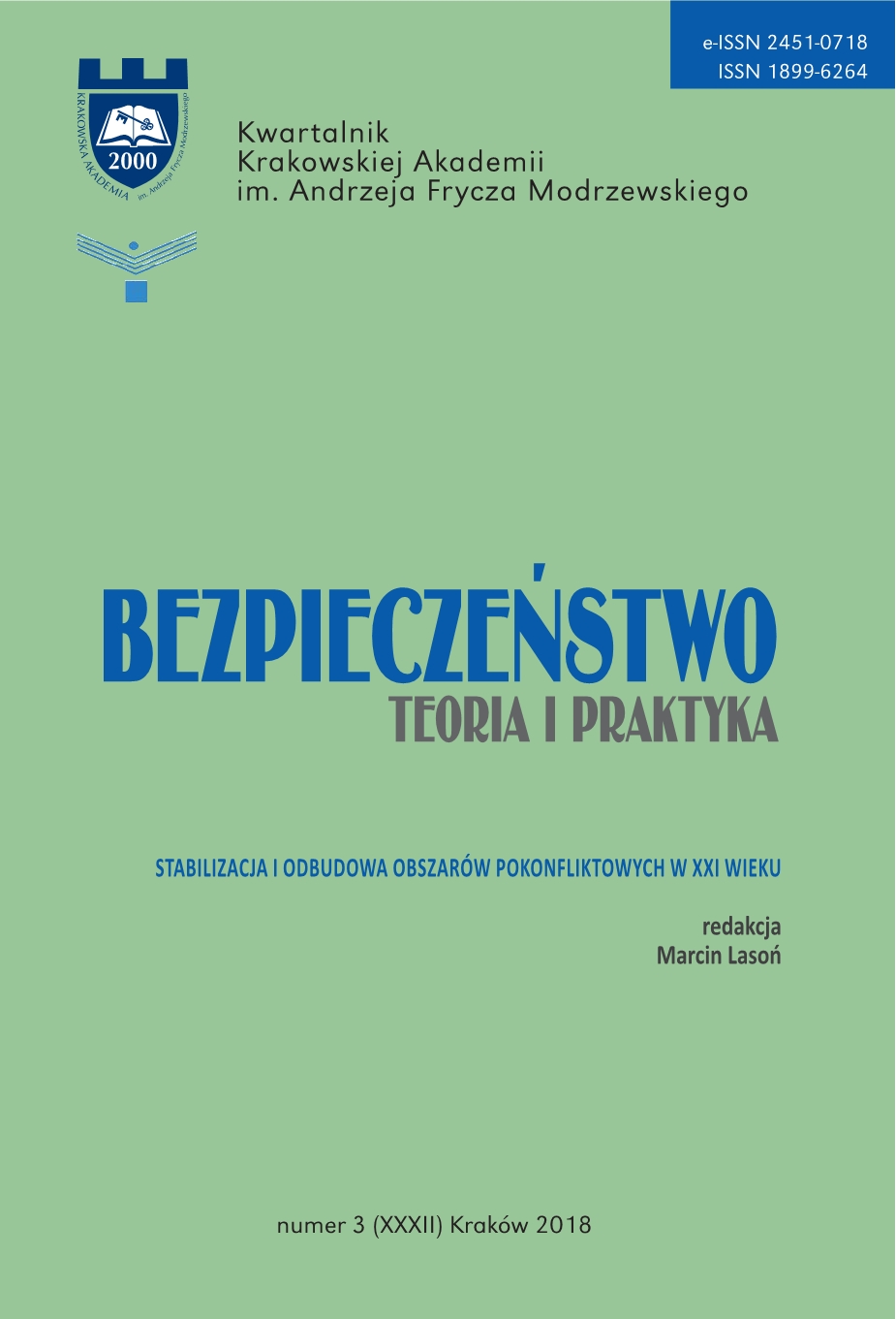
We kindly inform you that, as long as the subject affiliation of our 300.000+ articles is in progress, you might get unsufficient or no results on your third level or second level search. In this case, please broaden your search criteria.



The article is an attempt to indicate the role that can be played by the Special Operations Forces operating in post-conflict areas. The specificity of this kind of forces imposes a different definition of the area understood as a post-conflict area. Special Operations Forces appear in the theater of war far before the appearance of the visible symptoms of conflict and they are usually the last ones to leave the place. The text is a synthesis of a few available materials, available knowledge (unclassified solely) and the author’s own comments on the tasks facing the Special Operations Forces in the course of conducting operations in the described, specifically dedicated environment.
More...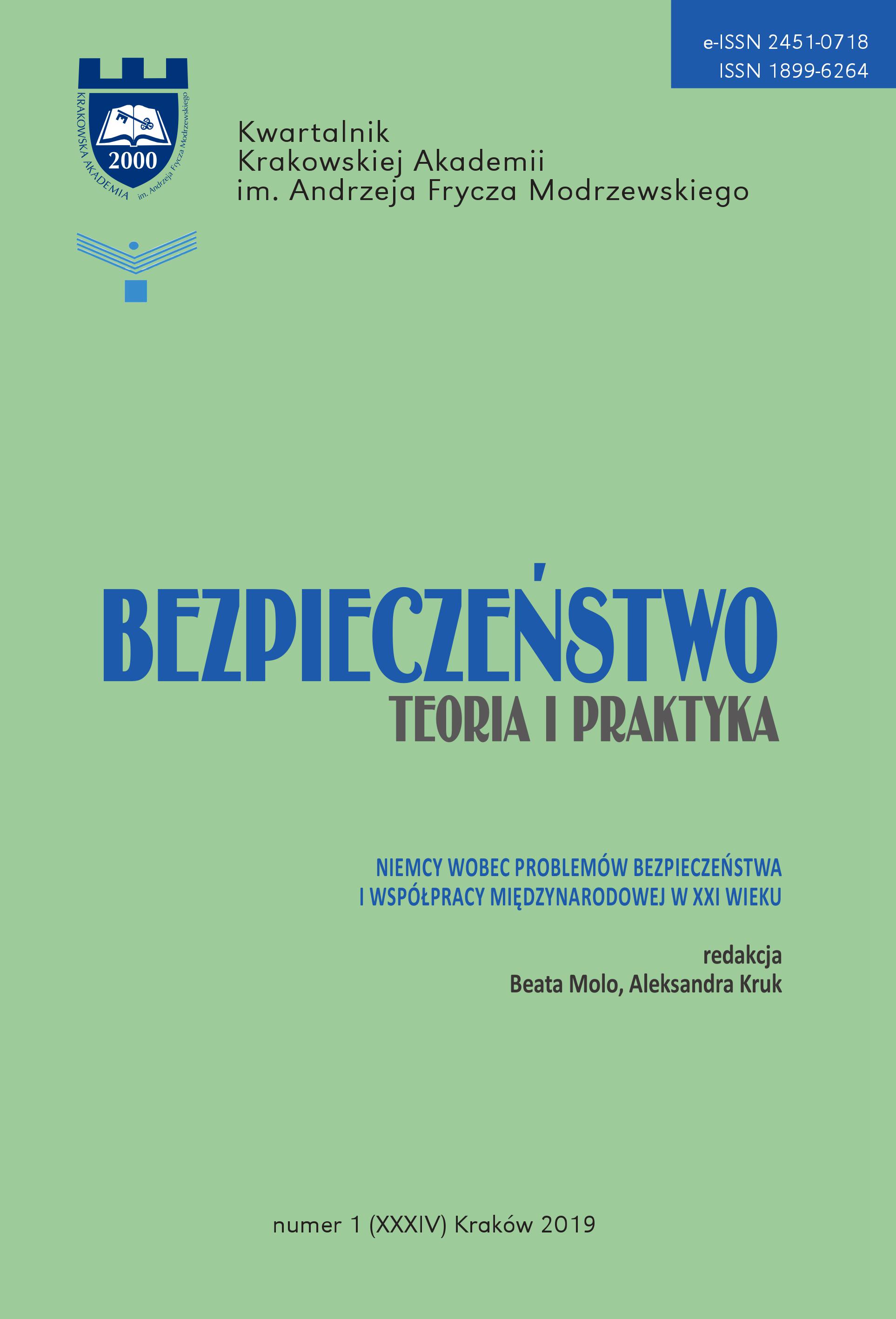
After the re-unification of Germany, the governments of the Republic were pushing for the policy of strategic partnership with Russia, especially in the area of economy. It was only A. Merkel’s government who started paying more attention to the violation of human rights in Russia and to paralysing the opposition. The Russian aggression against Ukraine shook the foundations of the German-Russian cooperation. From the middle of 2014, Germany carried out a two-track policy of sanctions to the Russian Federation and looking for a dialogue on international issues with Moscow. Currently, Germany is trying to ‘Europeanisate’ more its policy towards Russia. Germany and the EU still need Russia as a strategic partner in settling the problems of the Middle East and fighting against international terrorism.
More...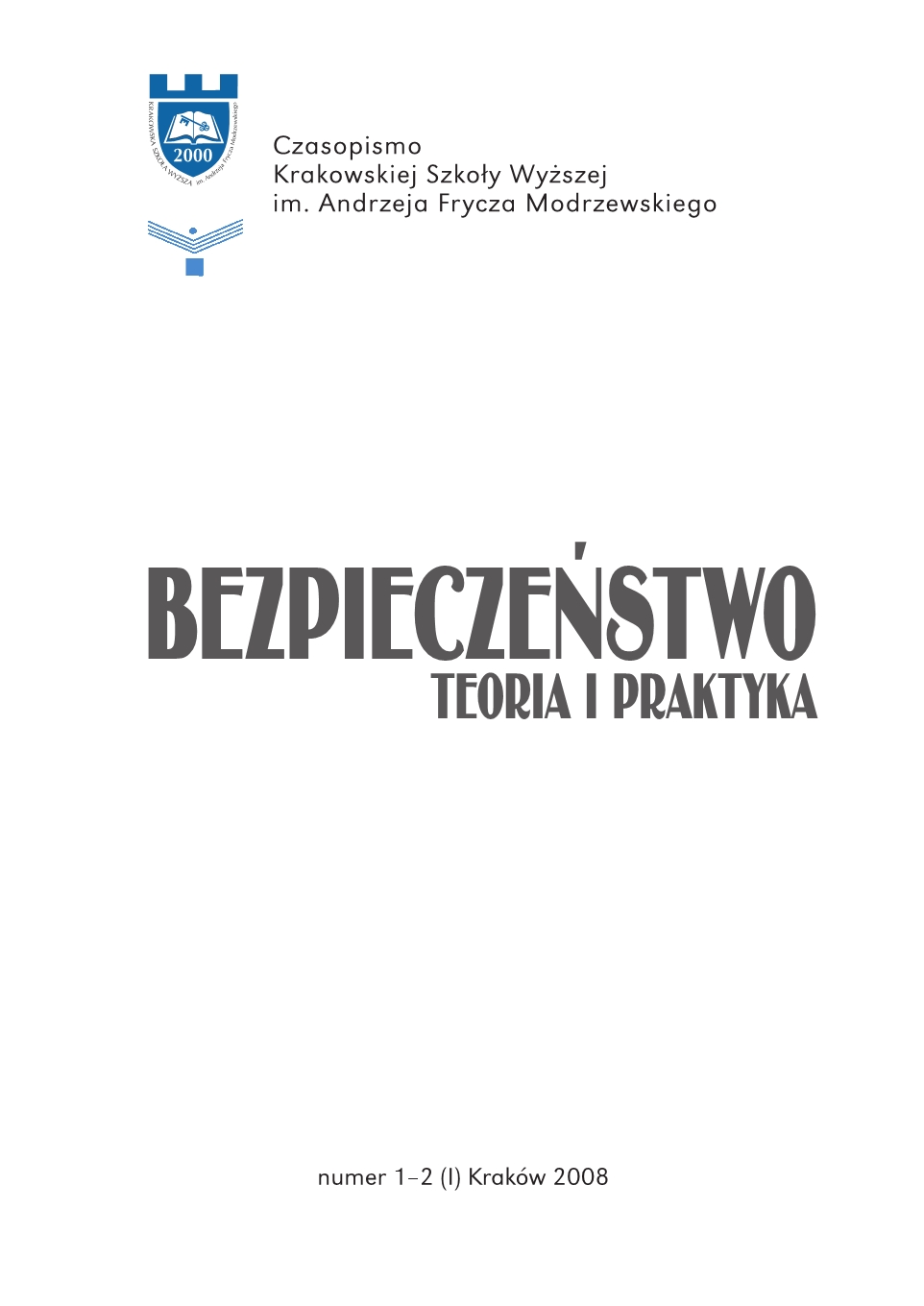
The article is an attempt at looking into the problems of the Serbian – Arab conflict through 20th-century history of Kosovo, when the ‘Kosovo knot’ that is so hard to disentangle was taking shape. The goal of the article on the one hand is to present the policy of Yugoslavian authorities after the second world war as they attempted to slow down the development of conflict between the two nations, and to portray on the other hand the attempts by Kosovo Albanians who aimed at the internationalisation of the case of Kosovo and winning approval for the self-assumed Kosovo Republic. To portray the further history of this antagonism, events that took place towards the end of the 20th century and early in the present one are also covered. Their number includes the civil war in Kosovo, NATO military intervention in Yugoslavia, and the establishment of temporary protectorate in the province. The article shows peaceful and military attempts of solving the Kosovo conflict.
More...
Aviation security aims to prevent criminal actions against aircraft and their passengers and crew. The European Union adopted a set of regulations on civil aviation security in 2001 after the attacks on the World Trade Center. These regulations are regularly updated in response to diminishing threats. European Union member states retain the right to apply more stringent measures. The subject of the research is the protection of civil aviation against existing threats. The purpose of this paper is to show what is fostered by the adopted legislation drafted largely as a response to specifi c events. Although indicative of the reactive nature of the regulations, many of them have been devoted to protective measures, safety improvements and preventive measures to be taken by aviation operators. Theoretical research methods were used.
More...
Almost five decades have passed since after the Nigerian civil war that claimed closed to five million lives between Nigerian and Biafran separatists. Yet, rather than learn lessons learnt to forestall peace, it is worrisome that the escalation of terror against state and its institutions has taken heightened dimensions at various times. It is this worry that gave vent to this theoretical paper that utilizes content analysis to explore relevant parameters that are factorial to this dangerous escalation of terror in Nigeria particularly targeting its institutions as helpless soft targets for attack. Consequently, the paper questioned institutional alienation, inequality, and unhealthy politicization of religion and education as largely responsible for the increasing terror attacks. Drawing from these insights, the paper using induction and deduction tools, outlined major ways forward in addressing the menace of terror. Inclusive governance, income redistribution, secularism as a functional state policy and liberalization of access to education according literature, were strong factors that point to solutions that can lead productive engagement and inclusive involvement in governance and decision-making process in order to ultimately encourage the de-escalation of terror attacks against state and its institutions.
More...
Security is an interdisciplinary concept that is important for the existence and development of individual people and entire societies. Many events can cause them anxiety, and this undoubtedly includes a terrorist act, which is inherently evil. Terrorism develops along with the development of civilization, which forces individual countries to constantly improve and modernize the methods of combating this threat. Although, according to research, Polish society is not afraid of terrorist attacks, in the current political situation it should be assumed that Poland may be the target of such attacks. State authorities have created an anti-terrorist system to ensure citizen safety. In which an important role in anti-theorist and counter-terrorist activities was assigned to the Police.
More...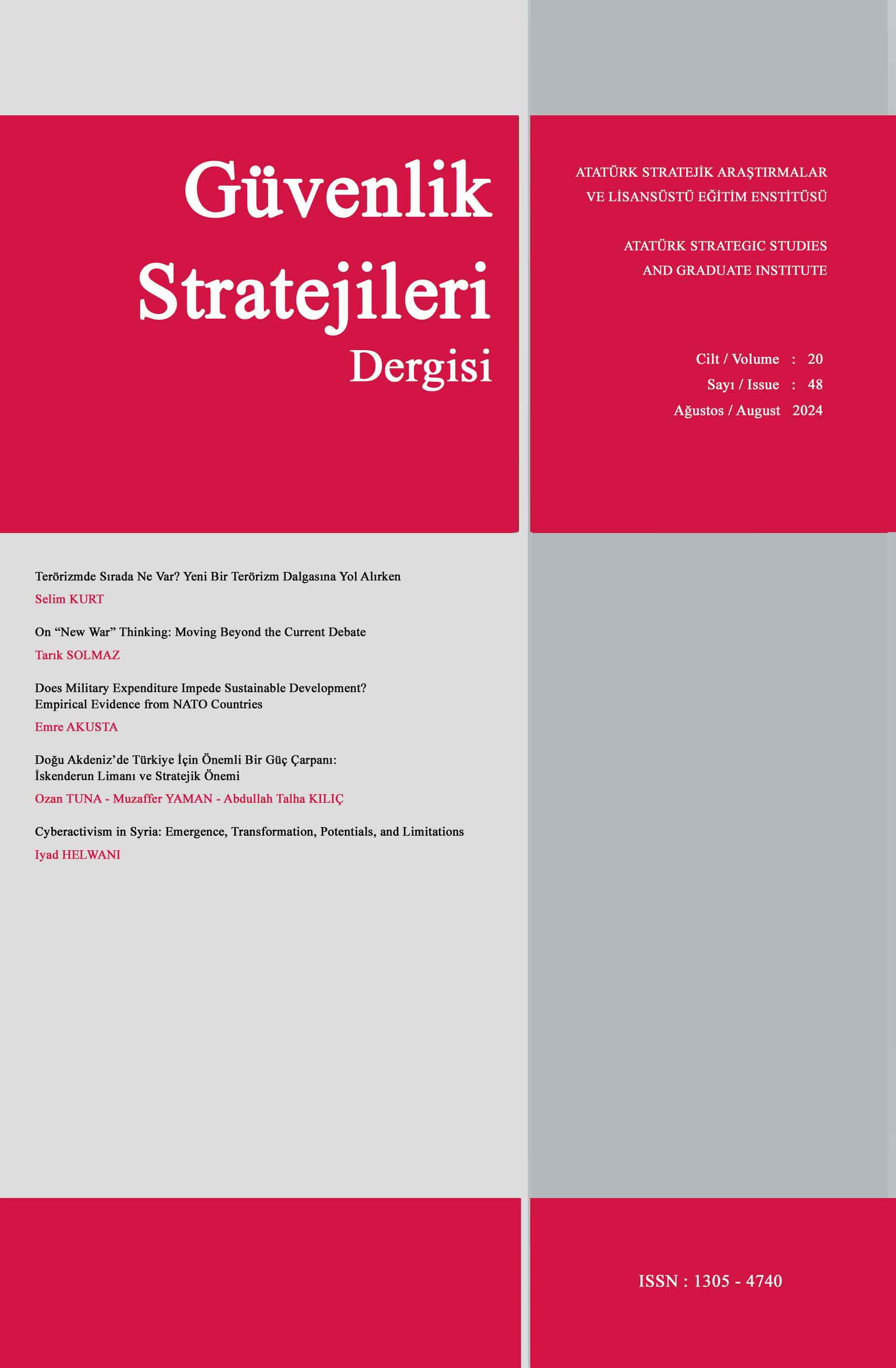
The ideas underlying terrorism, which can be summarized as the use of violence for political purposes, have transformed over time. One of the theories that aims to explain this transformation, the “wave theory” put forward by David C. Rapoport, claims that modern terrorism has progressed in four waves until today. The fourth wave is the current “religious wave”. There are also those who refer to this wave as “new terrorism” since it has significant differences from its predecessors in terms of motivation, organization, target selection, area of action, tactics and effective use of technology. The September 11 attacks were undoubtedly the event where the differentiation in the above-mentioned qualities was most evident. In the 2023 Global Terrorism Index report, it is pointed out that religiously motivated terrorism has decreased by 95 percent since its peak in 2016, which raises the question “what’s next?”. An analysis of recent terrorist attacks reveals the emergence of a new wave of terrorism, characterized by ideological diversity, decentralization and individualization, disinformation and lethality.
More...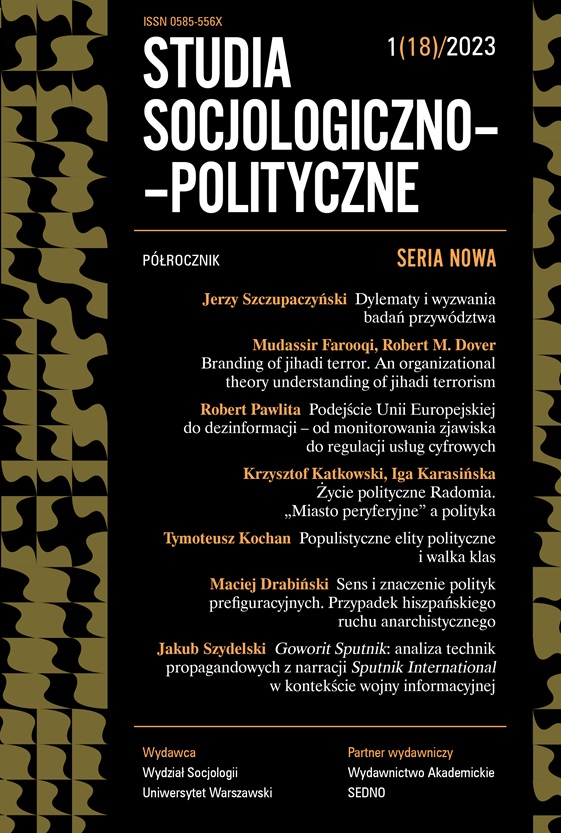
The following article provides an overview of the risks of disinformation in the context ofthe 2019 European Parliament elections. The aim of the article was to identify possiblesolutions to combat disinformation online. At the European Union level, it was realised thatdisinformation had been present on a larger scale since 2014, so steps were already takenin 2015 to counter it. From 2015 to 2019, tools to fght it were developed like the GeneralData Protection Regulation, the Code of Practice on Disinformation and the Action Planagainst Disinformation. According to experts, the 2019 EP elections went without majorincidents and the effect of the adopted regulations was satisfactory, despite inaccuracies inthe transparency of advertisements and scant cooperation between online platforms andresearch centres. However, the EU and the work did not stop there. The EU authorities beganto analyse the existing tools, as well as analysing further cases of emerging disinformation.After 2019, the approach of the EU authorities has changed. It was necessary to fnd outa certain legal framework that would defne fake news, disinformation and the activitiesof online platforms. Briefy, the EU’s actions can be characterised: from alerting, overcooperation with the media, researchers and fact-checkers, to the defnition of legal actsfor digital services. Work on disinformation has intensifed. It is likely that further work onnormalising the phenomenon will follow in the coming years.
More...

The following text discusses the Hamas terrorist attack on Israel in 2023 and its impact on the geopolitical situation of the Persian Gulf countries. The main focus is on the genesis of the Israeli-Palestinian conflict, with an emphasis on the development of the situation in the Gaza Strip and the activities of Hamas. The reactions of the Persian Gulf countries to the Hamas attack on October 7, 2023, and its political consequences for these countries are also discussed.To support this discussion, a hypothesis is presented that assumes the Israel-Hamas conflict encourages the Arab states of the Persian Gulf to balance between the USA, Israel, Iran, and support for the creation of a Palestinian state. This could lead to the suspension of the process of normalization of Israeli-Saudi relations at least until the end of military operations by Israel in the Gaza Strip. To verify this hypothesis, the following research questions are addressed:1) What is the origin of the Hamas terrorist attack on October 7, 2023, and more broadly of the Israeli-Palestinian conflict?2) How did the Persian Gulf countries react to the Hamas terrorist attack, and why did they react that way?3) What were the political repercussions of the Hamas attack on October 7, 2023?
More...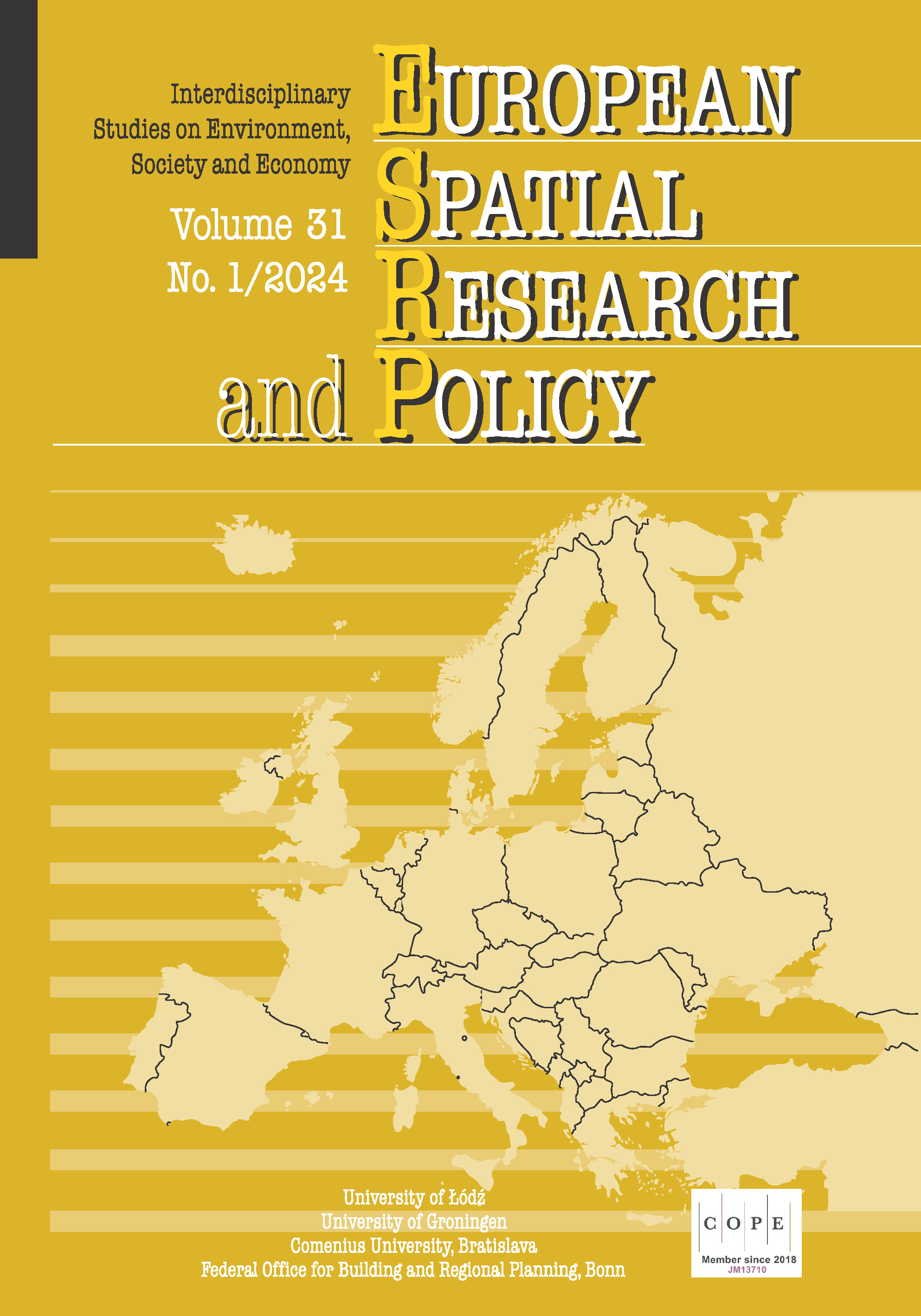
The aim of the article was the assessment of the spatial matching of existing shelters (supply) to the distribution of residents in Suwałki (demand), considering their declared transport behaviours while evacuating during war. The analysis was conducted based on the locations of existing emergency shelters using data on population distribution (registration data with building accuracy). Spatial alignment was determined using the P-Median problem and E2SFCA. In terms of establishing vehicular or pedestrian travel time, the Manhattan metric based on the urban road network model was utilised. A model of vehicle movement speed was then constructed, while a constant speed was assumed for pedestrian movement. Additionally, survey data on the transport behaviour of inhabitants of Suwałki in the case of war were conducted in 2023. The study concluded that the population residing within the city limits should evacuate on foot, and that prior training on the evacuation process is especially necessary for those who reside in less populated areas of the city. The analyses also showed that existing emergency shelters are overly dispersed, making management difficult for emergency services. Since the current capacity of emergency shelters is not sufficient for the number and distribution of inhabitants of Suwałki, the most practical significance of this article in this respect is to indicate to the authorities the optimal number and location for emergency shelters (to improve the evacuation process).
More...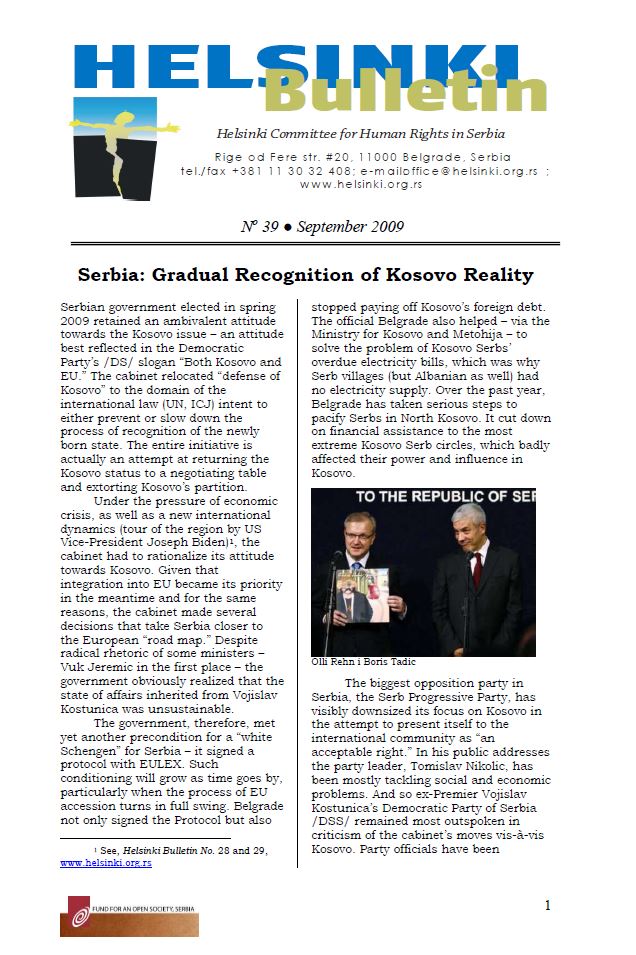
Serbian government elected in spring 2009 retained an ambivalent attitude towards the Kosovo issue – an attitude best reflected in the Democratic Party’s /DS/ slogan “Both Kosovo and EU.” The cabinet relocated “defense of Kosovo” to the domain of the international law (UN, ICJ) intent to either prevent or slow down the process of recognition of the newly born state. The entire initiative is actually an attempt at returning the Kosovo status to a negotiating table and extorting Kosovo’s partition.
More...
Serbian government elected in spring 2009 retained an ambivalent attitude towards the Kosovo issue – an attitude best reflected in the Democratic Party’s /DS/ slogan “Both Kosovo and EU.” The cabinet relocated “defense of Kosovo” to the domain of the international law (UN, ICJ) intent to either prevent or slow down the process of recognition of the newly born state. The entire initiative is actually an attempt at returning the Kosovo status to a negotiating table and extorting Kosovo’s partition.
More...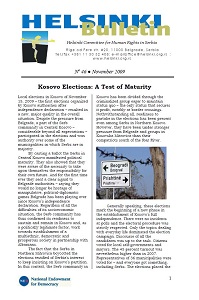
Local elections in Kosovo of November 15, 2009 – the first elections organized by Kosovo authorities after independence declaration – resulted in a new, major quality in the overall situation. Despite the pressure from Belgrade, a part of the Serb community in Central Kosovo – considerable beyond all expectations – participated in the elections and won authority over some of the municipalities in which Serbs are in majority.
More...
Local elections in Kosovo of November 15, 2009 – the first elections organized by Kosovo authorities after independence declaration – resulted in a new, major quality in the overall situation. Despite the pressure from Belgrade, a part of the Serb community in Central Kosovo – considerable beyond all expectations – participated in the elections and won authority over some of the municipalities in which Serbs are in majority.
More...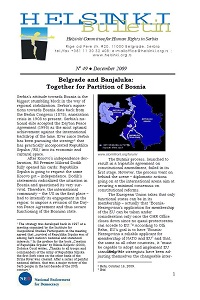
Serbia’s attitude towards Bosnia is the biggest stumbling block in the way of regional stabilization. Serbia’s aspirations towards Bosnia date back from the Berlin Congress (1878), annexation crisis in 1908 to present. Serbia’s national elite accepted the Dayton Peace Agreement (1995) as the most optimal achievement against the international backdrop of the time. Ever since Serbia has been pursuing the strategy that has practically incorporated Republika Srpska /RS/ into its economic and cultural space
More...
Serbia’s attitude towards Bosnia is the biggest stumbling block in the way of regional stabilization. Serbia’s aspirations towards Bosnia date back from the Berlin Congress (1878), annexation crisis in 1908 to present. Serbia’s national elite accepted the Dayton Peace Agreement (1995) as the most optimal achievement against the international backdrop of the time. Ever since Serbia has been pursuing the strategy that has practically incorporated Republika Srpska /RS/ into its economic and cultural space
More...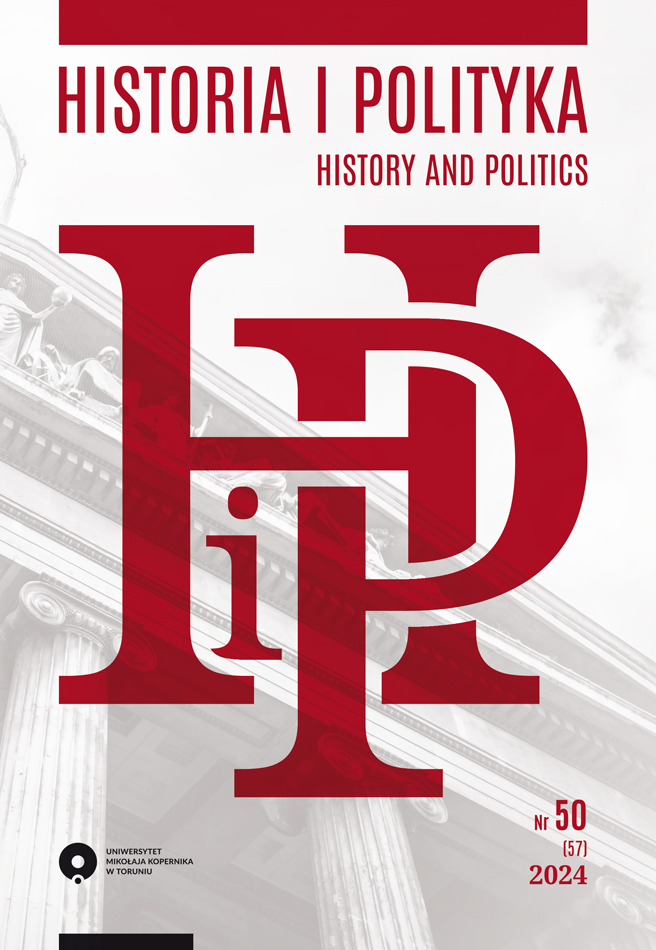
The author of the article presents his definition ofthe external threat, then he analyses the politicalthought of two nationalist political circles (thecircles of the “Myśl Polska” weekly magazine andthe periodical “Polityka Narodowa”) during thefull-scale Ukrainian-Russian conflict and in theyears immediately preceding it. It should be em-phasised that both circles consider themselves tobe continuators of the same nationalist movement,namely, the National Democracy and its leaderRoman Dmowski. The main objective of thearticle is to identify the most important externalthreats to the Polish state. Threats in the formof other state actors are taken into account. Theauthor concludes that the attitude towards Rus-sia, and by extension the conflict in Ukraine, hasbecome a fundamental axis of contention betweenthe two communities. This affects the perceptionof Poland’s external security arrangements.
More...